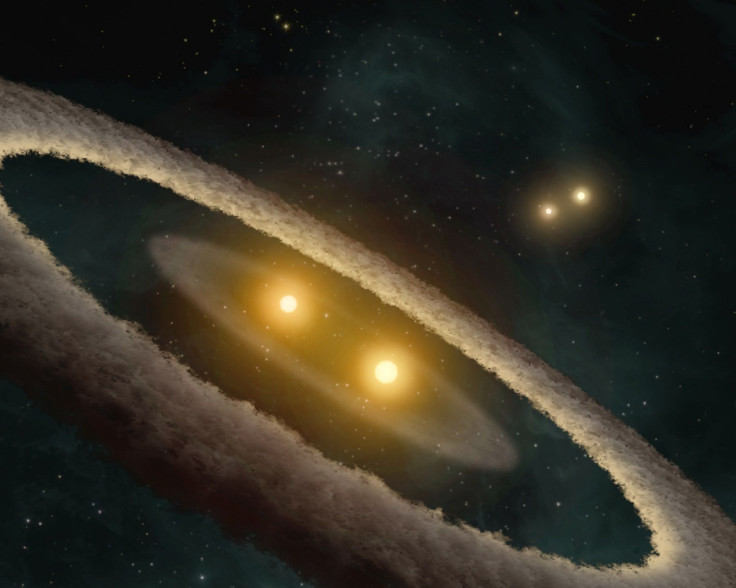First 3D Model Of Planet Orbiting A Binary System Created By Astronomers
KEY POINTS
- The binary system, named GJ 896AB, consists of two red dwarf stars that orbit each other
- They complete one orbit in 229 years
- The study will provide an answer to how planets are formed
Astronomers have succeeded in creating the first 3D model of a planet orbiting a binary system.
The binary system, named GJ 896AB, consists of two red dwarf stars that orbit each other. Orbiting the bigger of the two stars is a planet twice the size of Jupiter (GJ 896 Ab).
The breakthrough was achieved using an uncommon method called astrometry, following which the research team published its findings in The Astronomical Journal on Sept. 1.

"Since most stars are in binary or multiple systems, being able to understand systems such as this one will help us understand planet formation in general," co-author Salvador Curiel Ramirez, a researcher with the Institute of Astronomy at the National Autonomous University of Mexico (UNAM) said in a press release.
The bigger star of the binary system is 44% the size of our Sun, while the smaller one is 17% in size. The two stars are at a distance to each other equal to the distance between Neptune and the Sun, which is approximately 30 AUs. They complete one orbit in 229 years.
To date, thousands of extra-solar planets have been discovered. Most of these have been found with the help of indirect methods – like Transit Photometry and Doppler Spectroscopy – and the rest through other means.
However, scientists in this study used the National Science Foundation's (NSF) Very Long Baseline Array (VLBA) network. Ramirez said this feat "cannot be achieved with other exoplanet discovery methods."
For their study, data from VLBA observations between 2006 and 2011 and optical observations of the binary system made from 1941 to 2017 were combined with the new VLBA observations in 2020.
The scientists observed a "wobble" in the larger star's motion, which led them to the presence of a planet in the binary system. The "wobble" was due to the gravitational force exerted by the planet.
Scientists made further observations of the planet. They calculated the planet was twice the size of Jupiter, and has an orbital period of 284 days. Also, the planet's distance from its star was less than the distance between Venus and the Sun. Moreover, the orbit of the planet was inclined at about 148 degrees from the orbits of the two stars.
"This means that the planet moves around the main star in the opposite direction to that of the secondary star around the main star," Gisela Ortiz-León, of UNAM and the Max Planck Institute for Radioastronomy, said.
"This is the first time that such dynamical structure has been observed in a planet associated with a compact binary system that presumably was formed in the same protoplanetary disk," she added.
The study will provide an answer to how planets are formed.
"Additional detailed studies of this and similar systems can help us gain important insights into how planets are formed in binary systems. There are alternate theories for the formation mechanism, and more data can possibly indicate which is most likely," Joel Sanchez-Bermudez of UNAM, said.
© Copyright IBTimes 2025. All rights reserved.





















